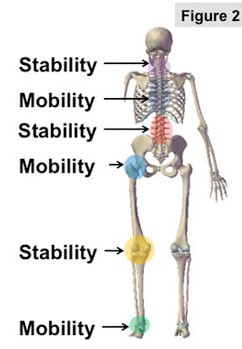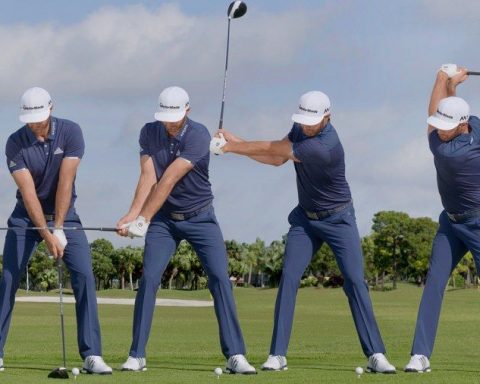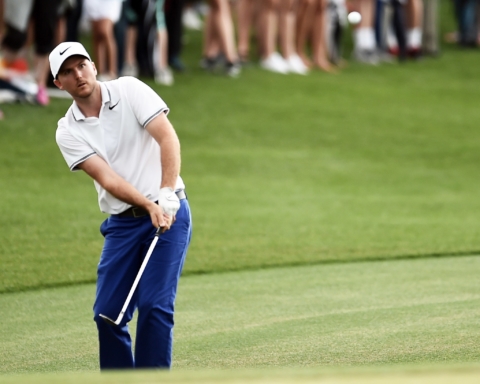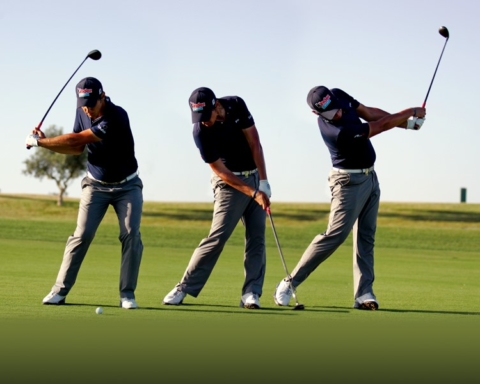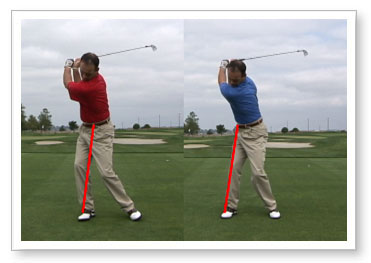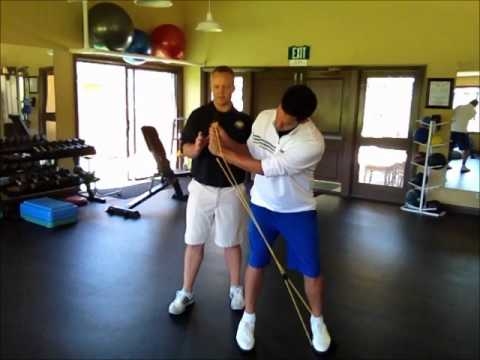I, Mike Hansen am often asked what I do for a living and when I tell them Golf Fitness the next question is “oh what is that”?
So, here it is in a nutshell. I could probably write a 500 page book about it, but here I’m going to do it in as few words as possible and in terms hopefully most will understand.
Our belief is there is no right way to swing the golf club, if you go on the driving range of a PGA Tour event you will see many different swings and those guys are making a pretty good living.
One thing that really bothers me is when a 58yr old man is trying to imitate the swing of the 20 something tour player. I understand that’s where they want their swing to be, but without the mobility and stability of the tour player, that 58yr old man is going to become very frustrated and probably injured.
The 2 things every golfer must have are Mobility (flexibility) and Stability. Mobility is the range of motion of the small muscles around the joints, which allow the joints to move freely and flexibility is the range of motion in the bigger muscles throughout the body. Mobility is most important but I wanted to differentiate the two for you. The other is Stability, which is the ability to hold one segment of the body still or stable while another part is moving.
The mobility/stability pattern of human movement first noted by strength coach Mike Boyle, and popularized in golf by Dr. Greg Rose of the Titleist Performance Institute, TPI Website. The table to the right provides a join-by-joint view of this pattern within the human body. Mobility/Stability Pattern of human movement: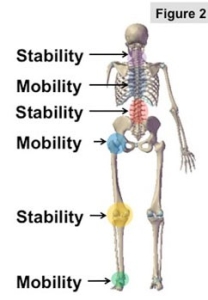 the foot is stable, the ankle is mobile, the knee is stable, the hip is mobile, lumbar spine is stable, thoracic spine (Upper back) is mobile, scapula is stable, shoulder is mobile, elbow is stable, wrist is mobile. As you can see the human body operates in alternating patterns of a mobile joint followed by a stable joint throughout the entire kinetic chain.
the foot is stable, the ankle is mobile, the knee is stable, the hip is mobile, lumbar spine is stable, thoracic spine (Upper back) is mobile, scapula is stable, shoulder is mobile, elbow is stable, wrist is mobile. As you can see the human body operates in alternating patterns of a mobile joint followed by a stable joint throughout the entire kinetic chain.
Let’s look at a swing fault now, how about the slide? Everyone knows the slide, that is where your lead hip (left hip in right handed golfers) moves way too far toward the target and causes you to push, hook or top the ball.
For this we will look at your left side. Ideally you would have a little lateral shift to the left and then turn the hips through, making room for the club. With a slide, your hips never turn and you just push them sideways. Why? Maybe habit, but 9 times out of 10 it’s because of a physical limitation in either the ankle or hip (the mobile joints). If you try and force it, guess what happens. That poor knee (stable joint) that is just made to allow the leg to go forward and backward is now trying to rotate causing A LOT of knee pain over time, even serious injury.
So what we do, with golf fitness in this instance is get the hip and ankle more mobile using different methods and getting the knee stronger to support the new hip rotation.
I can go on and on about each segment in the body and how limitations in the mobile joints and weakness around the stable joints can cause swing faults, aches and pains, and even serious injury.
But, I said I would keep it short.
I would keep it short.
This is where we start!
Step one in Golf Fitness is to measure range of motion in those joints and the strength in the stabilizing muscles, determine which ones need work and get them more mobile and stronger.
Step Two is to tie them into your golf swing and figure how to use your new found mobility and stability for more consistency and distance.
Mike Hansen
Here is a video I did to better explain this post:


